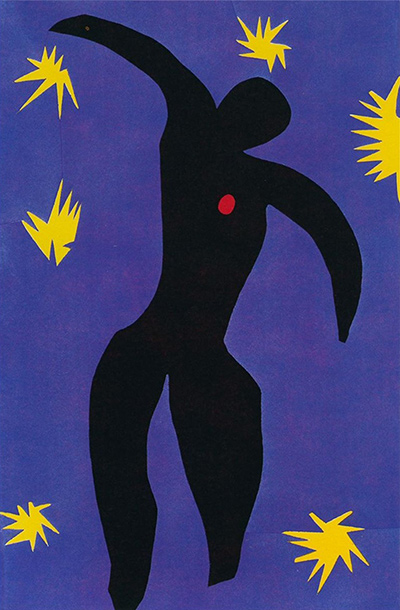Completed in 1947, this bold and light-hearted image is one of 20 pieces Henri Matisse included in his famous book Jazz. The image derives from a collage, which was then printed using a stencil technique known as pochoir.
Matisse's 2-dimensional, abstract shapes and vast areas of pure colour were a catalyst for an important change in the direction of his later work. This new style ultimately influenced artists of the 1960s such as Ellsworth Kelly and Al Held. For Matisse, this piece relates to the Greek myth of Icarus who "with a passionate heart, falls out of the starry sky". Icarus was a character from a celebrated Greek myth that was quite popular as a subject among European painters. Young Icarus was obsessed with the idea of flying. Determined to reach the skies and fulfil his dream, he constructed beautiful wings made from wax.
Happily he ascended, gliding through the skies, rising higher and higher. His father warned him against getting too close to the sun, but Icarus ignored his advice and one day headed straight up towards the glare of the sun. The heat melted the wax and Icarus fell to his death. Here, the mythological figure Icarus is presented in a simple form, floating against a royal blue nighttime sky. Matisse shows Icarus floundering in the sky, his body in free fall.
It's a deeply tragic moment of inevitable death, of failed hopes and dreams, yet the artist creates an almost meditational composition. The bursts of the yellow sunlight against the rich blue of the sky are striking. The beautiful, bold colour could be interpreted as Matisse's way of depicting Icarus' passion for flying. However, Icarus also may have been created in response to Matisse’s concern for his wife, daughter and son, who were involved with the Resistance.




